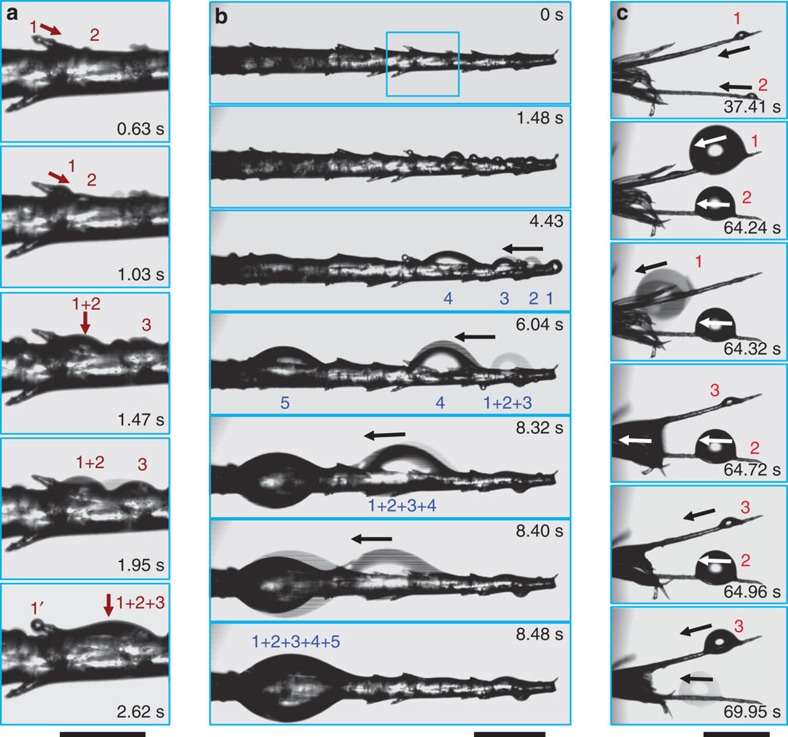Figure 3. In situ optical microscopic observation of the detailed water collection process on a single horizontal spine and two adjacent spines with trichomes.
(a) Continuous deposition of the water drops on the barbs and the spine. Initially, tiny water drops 1 and 2 were deposited concomitantly on the barb and the spine, respectively. Drop 1 moved toward the base of the barb with the volume increasing and coalesced with drop 2, forming larger drop 1+2. As the deposition proceeded, drop 1+2 further coalesced with drop 3 on the adjacent barb. A new cycle started when a subsequent small water drop 1′ deposited at the same location of initial drop 1. (b) Directional collection of the water drops on the spine. The deposited drop (1) and the coalesced drops (2–4) combine, moving directionally along the spine (black arrows) to form a large drop (1+2+3+4+5). (c) The behaviour of the water drops on the two adjacent spines containing trichomes. Drops 1 and 2 moved along the spines towards the base side, increasing in size. Upon contact with the trichomes at the base, the drops were absorbed immediately through the trichomes within a half second (from 64.32 to 64.72 s). After the absorption of the coalesced drops, a new cycle of water collection can begin, as observed with the tiny drop 3 at the middle of the spine. Scale bars, 50 μm (a), 100 μm (b) and 500 μm (c).

